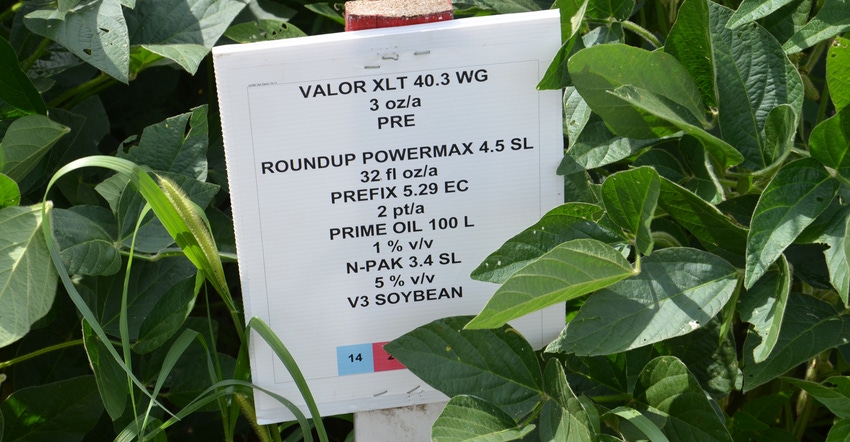
Many of you have attended a training session about applying dicamba herbicides for dicamba-tolerant soybeans. Even if you haven’t, you’ve likely looked at a herbicide label before. Labels usually reference maximum weed height. What happens if you spray weeds taller than the height specified on the label? Is it legal? Will the manufacturer stand behind the product if you don’t get adequate control?
Bill Johnson, Purdue University Extension weed control specialist, helped prepare materials for dicamba training. He has heard these questions about weed height.
Here is an Indiana Prairie Farmer interview with Johnson discussing issues related to weed height restrictions on labels:
The dicamba label on the newest dicamba herbicides says to apply when weeds are 4 inches or smaller. Is it legal to apply when weeds are taller? Yes, it is legal. It’s a logical question, because there are many restrictions in these labels. In many cases, you could be in violation if you don’t follow the label.
Will the company stand behind the product if you spray weeds taller than the specified height? No. That’s the point. It’s legal to spray weeds taller than 4 inches, but you’re on your own if it doesn’t work. However, in the past, some retailers use respray policies for various products where they provide some help to the grower if a product doesn’t perform. Check with your retailer about their policies.
Is there a restriction on soybean stage of growth for application of dicamba? Yes, it’s the R1 stage. Check the label of the product you’re going to apply to make sure what it is. R1 is the beginning of bloom. If there are flowers on any node on the main stem, the plant is classified as R1. It’s illegal and a violation to spray weeds if soybeans are at or beyond the growth stage specified on the label.
In the dicamba training in Indiana, a slide in the presentation showed a soybean field with weeds sticking out the top on one side, and a soybean field with no weeds present on the right side. What was the point? It was included to make the point that dicamba technology works. Dicamba is very effective, even on large giant ragweeds. It isn’t as effective on pigweed species and marestail if weeds are very large. The point behind the slide certainly wasn’t to encourage anyone to let weeds get that tall before spraying. Instead, we were underlining the message that everyone needs to follow label rules and do what they can to avoid issues this year. We need to keep these tools in our toolbox. If there are lots of problems with injury to sensitive crops in 2018, EPA could restrict use or even remove these products from the market in the future.
Was the excellent weed control depicted on the right side of the slide in the training presentation obtained with one postemergence pass? No. That was a different field altogether. Residual herbicides were applied on that field before planting, and residual herbicides were included in the post spray application. Controlling tough weeds like waterhemp requires residuals on both passes.
About the Author(s)
You May Also Like




